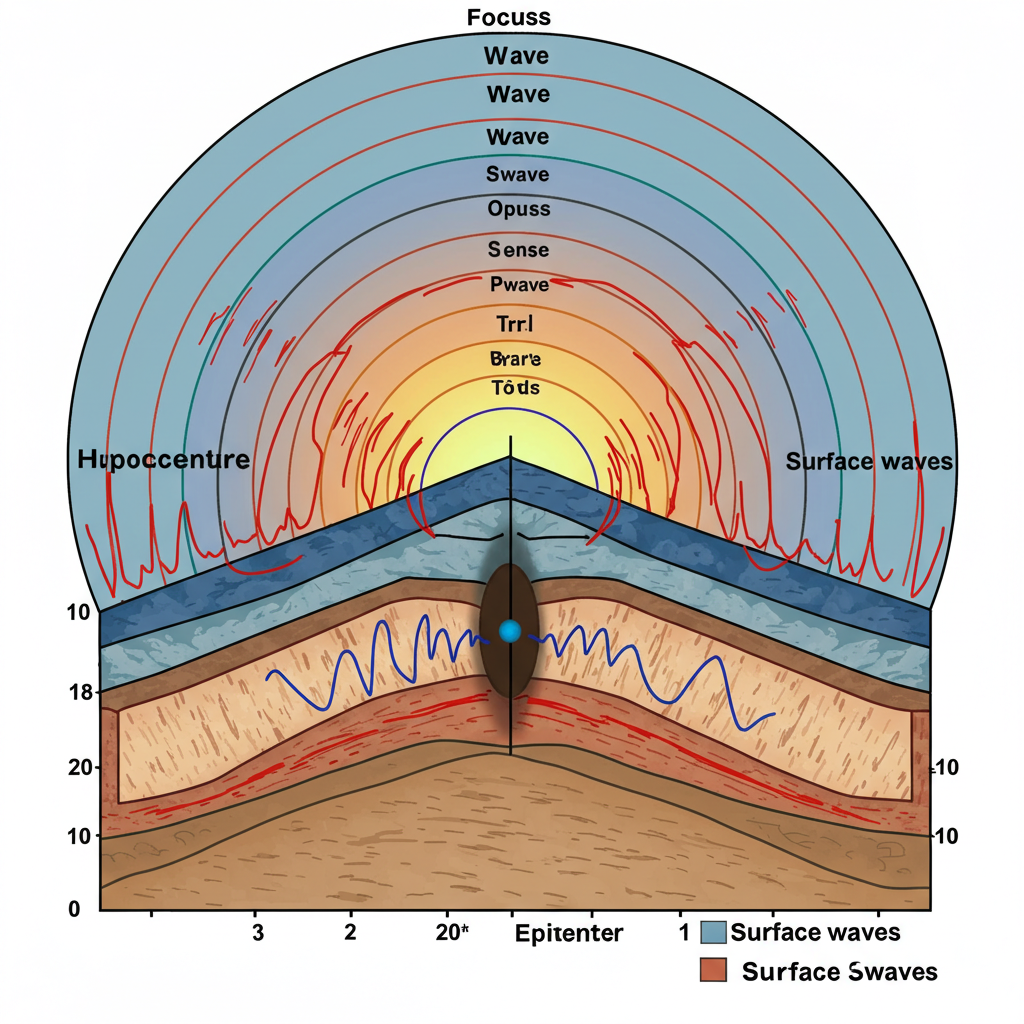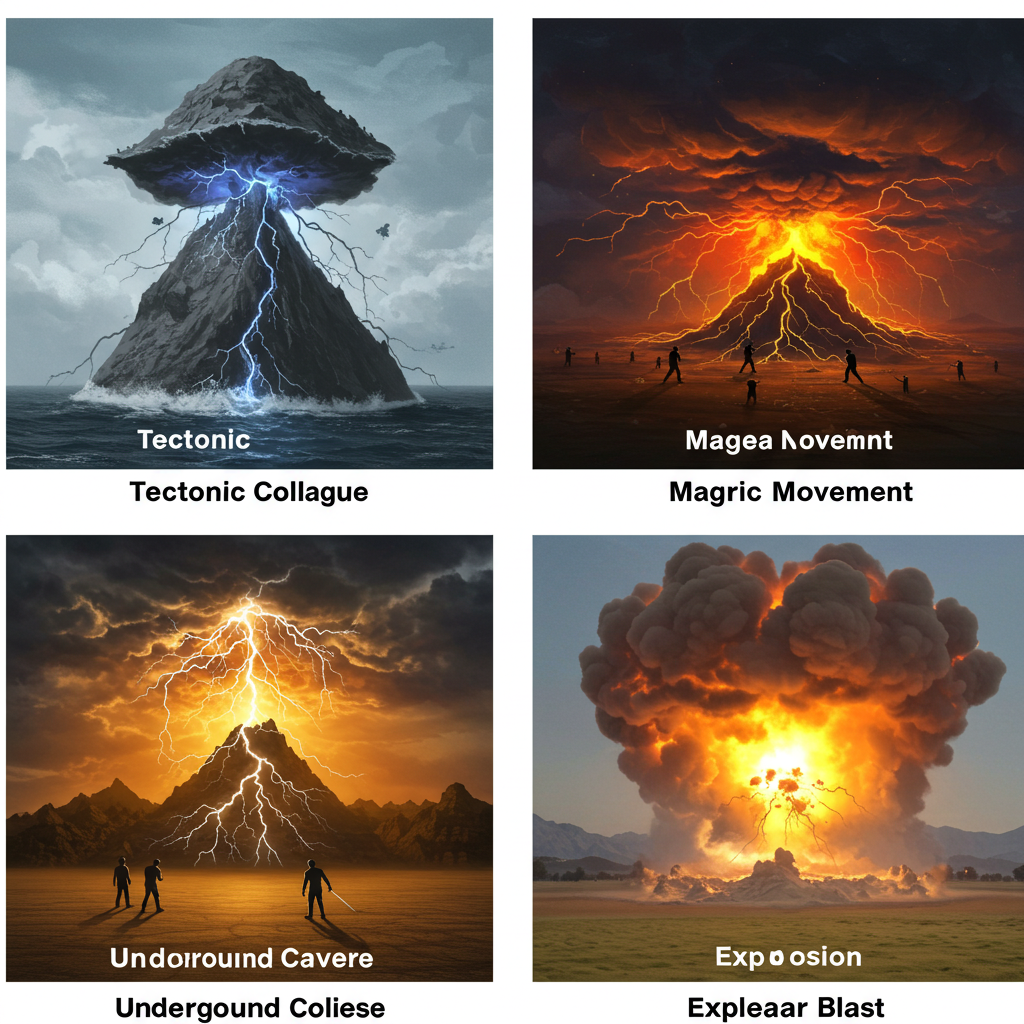Discover the science behind earthquakes. Learn how tectonic movements and geological processes lead to these natural phenomena and their impact on our world.
Earthquakes are one of the most powerful and unpredictable natural phenomena on Earth. They can cause widespread destruction, loss of life, and significant changes to the landscape. But what exactly causes an earthquake? To understand this, we need to delve into the science behind the Earth’s structure, tectonic plates, and the forces that drive them. This blog will explore the mechanisms of earthquakes, their types, and the impact they have on our planet.
1. The Earth’s Structure: A Layered Planet
The Earth is composed of several layers, each with distinct properties:
- Crust: The outermost layer, where we live. It is thin and solid, ranging from 5 to 70 kilometers in thickness.
- Mantle: Below the crust, the mantle is semi-solid and extends to about 2,900 kilometers deep. It is composed of molten rock called magma.
- Core: The innermost layer, divided into the outer core (liquid) and the inner core (solid). The core is primarily made of iron and nickel.
The Earth’s crust and the uppermost part of the mantle together form the lithosphere, which is broken into several large and small pieces called tectonic plates. These plates float on the semi-fluid asthenosphere beneath them, and their movement is the primary cause of earthquakes.
2. Tectonic Plates and Their Movement
Tectonic plates are constantly moving, albeit very slowly—typically a few centimeters per year. This movement is driven by forces such as:
- Convection Currents: Heat from the Earth’s core creates convection currents in the mantle, pushing the plates.
- Ridge Push: At mid-ocean ridges, new crust is formed, pushing older crust away.
- Slab Pull: At subduction zones, denser oceanic plates sink into the mantle, pulling the rest of the plate with them.
When these plates interact at their boundaries, they can collide, slide past each other, or move apart. These interactions create stress in the Earth’s crust, which eventually leads to earthquakes.

3. How Earthquakes Occur

An earthquake occurs when the stress built up along a fault line exceeds the strength of the rocks, causing them to break and slip. This sudden release of energy generates seismic waves that shake the ground. Here’s a step-by-step breakdown:
a. Stress Accumulation
As tectonic plates move, they exert pressure on each other. Over time, this pressure builds up, deforming the rocks along fault lines.
b. Rupture
When the stress becomes too great, the rocks fracture, and the plates suddenly slip. This is known as the focus or hypocenter of the earthquake.
c. Energy Release
The energy released during the rupture travels in the form of seismic waves, which radiate outward from the focus. The point on the Earth’s surface directly above the focus is called the epicenter.
d. Aftershocks
After the main earthquake, smaller tremors called aftershocks may occur as the crust adjusts to the new stress distribution.
4. Types of Earthquakes

Earthquakes can be classified based on their causes:
a. Tectonic Earthquakes
These are the most common type, caused by the movement of tectonic plates. They occur at plate boundaries, such as the Pacific Ring of Fire.
b. Volcanic Earthquakes
Associated with volcanic activity, these earthquakes occur when magma moves beneath a volcano, fracturing the surrounding rocks.
c. Collapse Earthquakes
These are caused by the collapse of underground caverns or mines. They are usually smaller in magnitude.
d. Explosion Earthquakes
Resulting from human activities, such as nuclear explosions or mining blasts, these earthquakes release energy artificially.
5. Measuring Earthquakes
Earthquakes are measured using two main scales:
a. Richter Scale
Developed by Charles F. Richter, this scale measures the magnitude of an earthquake based on the amplitude of seismic waves. Each whole number increase represents a tenfold increase in amplitude and approximately 31.6 times more energy release.
b. Moment Magnitude Scale (Mw)
This scale measures the total energy released by an earthquake, taking into account the area of the fault that slipped and the amount of movement. It is more accurate for large earthquakes.
c. Modified Mercalli Intensity Scale
This scale measures the intensity of shaking and its effects on people, buildings, and the environment. It ranges from I (not felt) to XII (total destruction).
6. The Impact of Earthquakes
Earthquakes can have devastating consequences:
a. Ground Shaking
The primary effect of an earthquake, ground shaking can damage buildings, bridges, and infrastructure.
b. Surface Rupture
In some cases, the ground may split open along the fault line, causing significant damage.
c. Landslides
Shaking can trigger landslides, especially in mountainous regions.
d. Tsunamis
Underwater earthquakes can displace large volumes of water, generating tsunamis that can devastate coastal areas.
e. Human and Economic Loss
Earthquakes can result in loss of life, injuries, and economic disruption, particularly in densely populated areas.
7. Predicting and Preparing for Earthquakes
While it is currently impossible to predict earthquakes with precision, scientists use various methods to assess seismic risk:
a. Seismic Hazard Maps
These maps show the likelihood of earthquakes in different regions, helping communities prepare.
b. Building Codes
Strict building codes in earthquake-prone areas ensure that structures can withstand shaking.
c. Public Awareness
Educating the public about earthquake safety, such as “Drop, Cover, and Hold On,” can save lives.
d. Early Warning Systems
Some regions have implemented early warning systems that detect seismic waves and provide seconds to minutes of advance notice.
8. Notable Earthquakes in History
Some of the most significant earthquakes in history include:
- 2004 Indian Ocean Earthquake: A magnitude 9.1–9.3 earthquake triggered a tsunami that killed over 230,000 people.
- 2011 Tōhoku Earthquake: A magnitude 9.0 earthquake in Japan caused a tsunami and the Fukushima nuclear disaster.
- 1906 San Francisco Earthquake: A magnitude 7.9 earthquake devastated San Francisco, killing over 3,000 people.
9. Conclusion
Earthquakes are a natural consequence of the dynamic processes that shape our planet. While they can be destructive, understanding their causes and effects allows us to better prepare and mitigate their impact. By studying the Earth’s structure, tectonic plates, and seismic activity, scientists continue to improve our ability to predict and respond to these powerful events. As we live on a constantly changing planet, awareness and preparedness are our best defenses against the inevitable shaking of the ground beneath our feet.
